An analysis by Michael Maciel
I’ve been reading Jean Baudrillard. He wrote Simulacra and Simulation, the book that Neo pulls off the shelf at the beginning of the first movie. According to the aficionados, it’s pretty much the key to the whole thing. Baudrillard talks about copies without originals. He’s a Postmodern Social theorist along the lines of Jacques Derrida and Michel Foucalt. And just so you know, I’m really just name-dropping here. I know almost nothing about these guys, their philosophy, or Postmodernism. Well, maybe a little bit, perhaps only enough to get me into trouble. But one thing that resonated with me while I was struggling through Baudrillard’s book, something that he says in the beginning, was that old saying, “There is nothing new under the sun.”
JB actually uses the word “matrix” and coins the phrase “the desert of the real,” which you might recall is how Morpheus describes the “real” world. By this, JB means that there is nothing real about the real world at all, that everything is a copy of a copy with no original, no ultimate underlying reality. There is no intrinsic meaning outside of what we give it, that the world is essentially meaningless and machine-like, chugging along mindlessly in its own self-perpetuating elaborations. No choice, just action and reaction. This is, as I understand it, pretty much straight-up Postmodernism.
Where the phrase “nothing new under the sun” came in was when I was reminded in all of this how the geology of the planet is continuously recycling itself. There is no such thing as an “original” continent. The entire crust has been thrust up and dragged back down into the earth’s interior more times than anyone can count. It’s like a boiling stew. Every rock, every bit of sand, every molecule of water has been broken apart and reassembled countless times. There is literally nothing new, nor, for that matter, original.
This can also be said about our thoughts and our sense of who we are.

What JB and the Wachowskis (the creators of The Matrix Trilogy) are telling us is that we exist in a swirl that has neither beginning nor end. It operates on many different levels, but its inherent limitations are the same regardless of which level we take it on. What we call “the world” is nothing more than a machine. It has rules, but no purpose. It isn’t “going anywhere.” It just is, and it is perfectly happy to be what it is.
Neo
Who (or what) is Neo? This is where we make the distinction between “the world” and “us,” and this is normally where people start to take sides. Some say that there is no difference, that there is no such thing as a “self,” and that everything “arises” in a kind of circular causality, where causes lead to effects, which in turn affect their causes.

Others say that it’s the individual who is real, that “Personhood” and “Godhood” are essentially identical. While the “machine” is blind and automatic, the Person has the prerogative of choice, free will—but only those who have seen the reality of the Matrix, not those who are still identified with it. “The Matrix cannot tell you who you are,” Trinity tells Neo.
The movies take us farther, however, blurring the boundaries between the machine world and the world of the Matrix. Neo’s powers are not limited, but stretch across heaven and hell, as it were. Whereas the universe and everything in it is in perpetual flux and running on automatic pilot, the One (the name Neo is an anagram of the word One) neither changes nor is limited by what has gone before.
“Heaven and earth shall pass away, but my word will never pass away.”
“Before Abraham was, I am.”
“I am that I am.”
The Son/Sun of God
 It’s the “under the sun” part of the “nothing new” clause that becomes all important at this point. You’ll recall that Neo’s name in the Matrix is Thomas Anderson. The name Anderson comes from the Greek andros, or man. This makes Neo the “Son of Man”—it is the Christ in us that constitutes our true identity. And when we identify with it, we see the world as it is, and that truth gives us the freedom to make our own choices, instead of being slaves to the Law of Cause and Effect. The truth sets us free. It delivers us from the Wheel of Karma, from samsara. Instead of “through a glass darkly”, we now see the world “face to face” (St. Paul). “When the doors of perception are cleansed, we shall see the world as it is…infinite.” (Blake)
It’s the “under the sun” part of the “nothing new” clause that becomes all important at this point. You’ll recall that Neo’s name in the Matrix is Thomas Anderson. The name Anderson comes from the Greek andros, or man. This makes Neo the “Son of Man”—it is the Christ in us that constitutes our true identity. And when we identify with it, we see the world as it is, and that truth gives us the freedom to make our own choices, instead of being slaves to the Law of Cause and Effect. The truth sets us free. It delivers us from the Wheel of Karma, from samsara. Instead of “through a glass darkly”, we now see the world “face to face” (St. Paul). “When the doors of perception are cleansed, we shall see the world as it is…infinite.” (Blake)
This illustrates the metaphysical aphorism, “The world and the self (little s) are an illusion.” It also illustrates who we really are and what it takes to realize that.
This all just scratches the surface. Every character in the story has symbolic meaning, as well as every turn of the plot, and the actions that the characters fall into. It’s the closest thing to a bona fide myth since the Middle Ages, something that the renowned Joseph Campbell said was vital to the health of a society.
I think that “the One” is to Neo what “the Christ” is to Jesus, the words, I mean. Neo goes through his changes, but the One stays the same.
Nature
The “machine world” sounds a lot like Descartes’ “clockwork universe,” which at its own level is quite mechanical. In Reloaded, the Merovingian (the nasty Frenchman who goes on and on about causality) represents the intelligence in nature that knows exactly what to do in every situation but cannot choose to do differently. In Revolutions, he rules over a nightclub called “Hel”, and of course, he’s the Greek god Hades, because he has Persephone in tow. This also makes him the “Dweller on the Threshold.”

Hades is separated from the world of men by a great abyss, which means that this level of the Creation exists and operates quite independently from the world of light, which comes from “above” and finds its expression and self-discovery in woMan. In other words, God knows (Him)self in and through us as God finds expression in us. And, It is God knowing Himself in us, that glimmer of recognition or divine spark, which constitutes the “I,” that makes us human. Without that, we would have only the instinctual/intellectual mind, which is so accurately represented by the Merovingian.
The “I” is different from the ego. The “I” is what gives us our soul quality, which for the purposes of this conversation we can say it is that which makes us different from a (bio)machine. The ego is merely the reflection of the instinctual/intellectual mind, a virtual self, or “residual self-image,” as said in the first movie. It has no volition except that which arises from its own nature. The “I,” on the other hand, responds only to that which comes from above—its source.
As proof of this, look at Maslow’s Hierarchy of Needs. I can’t list them off hand, but roughly they are everything necessary for bodily and emotional survival. It’s like the ego’s Bill of Rights. But the person who is “seized” by God, by the muses, or by revelation cares nothing about physical comforts. He or she will gladly forego these things for the sake of their art—their vision. This is our higher nature, the Christ in us and the One in Neo.
I know there’s more to be unraveled as to whether Neo is human or a program (or if there’s a difference between these two things). Perhaps the story breaks down at some point, or maybe it will turn out to be the next Great Myth for mankind(?)
Agent Smith
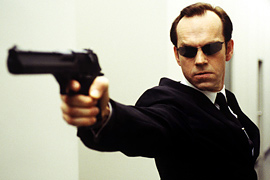 The third movie (Revolutions) ends with the crucifixion and then skips over the resurrection right to the ascension. I’m not sure about the Hindu philosophical references, but this is how it plays out in the Christ Jesus motif. There is a strong allusion to a second coming, but nothing really clear, as far as I could see.
The third movie (Revolutions) ends with the crucifixion and then skips over the resurrection right to the ascension. I’m not sure about the Hindu philosophical references, but this is how it plays out in the Christ Jesus motif. There is a strong allusion to a second coming, but nothing really clear, as far as I could see.
The “ransom for many” is pretty obvious. Neo, laid out in cruciform, gives his life as a sacrifice so that the unchecked forces of Karma, represented by former Agent Smith, don’t balance out all of the equations and bring the Machine World and the Matrix to a finality. All sentient beings are vicariously saved through his willing sacrifice.
Neo uses freedom of choice to defeat Smith, which Smith is incapable of understanding. If Smith does represent Karma, then much can be derived about the “Way” and what it means to symbolically follow Christ on his journey to Golgotha and beyond.
One of the reasons I think Smith represents the forces of Karma is his statement at the end, where he realizes that Neo’s act of surrender has overcome the automatism of Smith’s will. He says, “It’s not fair!” Karma is all about evening the scales, bringing about balance or inertia. This is Smith’s “purpose,” which he has no choice but to fulfill.
It cannot be said, however, that Smith (or Karma) is evil. Because without Karma, there can be no creation. The world exists in the dynamic play of plus and minus—the Matrix. The wild card of human volition is counterweighted by Karma’s inexorable push for balance.
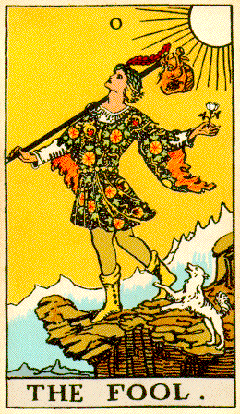 The Artificial Intelligence of the Machine World only knows how to perpetuate itself. It cannot transcend itself except through the agency of man, which is what Smith was able to do, but only because Neo initiated it. If the Machine World is equivalent to what we call Nature, then it is only through us that nature can become self-aware. Right now, it’s aware but has no sense of self. In the absence of a sense of self, no choice can exist. Oh, there’s choice, but only that which is afforded by its own parameters, nothing in the way of real possibility, or transcendence. Nature can only be Nature.
The Artificial Intelligence of the Machine World only knows how to perpetuate itself. It cannot transcend itself except through the agency of man, which is what Smith was able to do, but only because Neo initiated it. If the Machine World is equivalent to what we call Nature, then it is only through us that nature can become self-aware. Right now, it’s aware but has no sense of self. In the absence of a sense of self, no choice can exist. Oh, there’s choice, but only that which is afforded by its own parameters, nothing in the way of real possibility, or transcendence. Nature can only be Nature.
In Esoteric Christianity, Christ literally saves not just Mankind, but the world itself. The forces of Karma, it is said, had become so strong (like Smith) that man’s self had nearly become lost in his animal 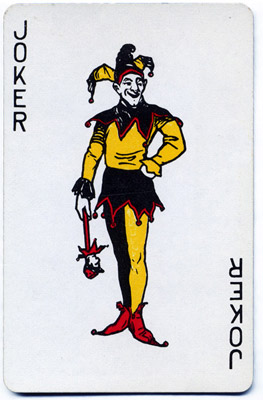 nature. This would have negated any ability on man’s part to “redeem” nature through his self-awareness, the “Christ” in each person. Like the One, man is the factor that keeps the whole field of possibility afloat by virtue of the divine spark within him. Bury that deep enough, and the equation of the earth plane becomes seriously one-sided, and in a spiritual sense would eventually implode.
nature. This would have negated any ability on man’s part to “redeem” nature through his self-awareness, the “Christ” in each person. Like the One, man is the factor that keeps the whole field of possibility afloat by virtue of the divine spark within him. Bury that deep enough, and the equation of the earth plane becomes seriously one-sided, and in a spiritual sense would eventually implode.
Smith is a generic man, a product of the Machine World, in that he is the “agency” by which the machines control the wild card factor of volition within humans. Smith clearly represents the animal nature in man, the instinctual/intellectual side of us bent on physical survival. Though it is aware of its “self,” it is also aware that that self is devoid of divinity. It is empty. It knows, like Smith (who “can’t stand the stench”), that it is trapped in Nature and wants more than anything to “get out.” Smith wants the codes to Zion’s mainframe, so that he can effectively end his (Nature’s) imprisoned awareness, desiring annihilation over the frustrated existence of an empty and meaningless, soulless self.

But after he is “liberated” by Neo (ensouled, as it were, when Neo enters into and explodes Smith at the end of the first movie), he desires to take over the world in the way that Satan wants Jesus to do when he tempts him in the wilderness. However, Smith, who at this point, having been “brushed by an angel” in his partial ensoulment by Neo, is the ego residing in all of us in its attempt to usurp the divine nature of the “I”.

He represents the tendency we all have to take the beatific vision personally, not realizing of course that that path leads inevitably to destruction. “The bigger they are, the harder they fall.” And since the inflated ego is inextricably a part of “the world,” it will forever be subject to its ups and downs. Jesus knew this and rightly refused Satan’s offer.
In its limited form of awareness, Nature relentlessly conforms to the Law of Cause and Effect. Even its evolutionary explorations are hemmed in by a limited set of options. It has no possibility of transcendence. This is why Jesus’ teachings run counter to the survival instinct: turn the other cheek, give your life in order to find it, even his own death on the cross. The instinctual/intellectual mind cannot understand this, just as Smith could not understand nor predict what Neo was going to do.
The World’s “Purpose”
Assuming that the world we think we see is the Matrix of the story, then, like the Matrix, the world must have a purpose for being here. In the movie, the purpose of the Matrix is to facilitate the use of human beings as energy sources for the machines, because the Machine World cannot get its energy directly from the sun. If the analogy is correct, then Nature cannot get its spiritual energy directly from God, but only through the life principle that finds its way into the world through the divine spark, the “I,” of the awakened ones, the “saviors” of the world.

Mankind as a whole is referred to by some as the “Sonship,” meaning that those qualities normally reserved for Christ Jesus are really man’s own collective estate. Therefore, woMan is the mediator for the world. The problem is that we are for the most part unconscious of this, with the exception of the few whom we call saviors, and are therefore subject to the pull of Nature, which only wants the energy that comes through us from God.

Nature ‘knows’ that it needs the enlightened self-awareness of humanity in order to keep from dying in its own entropy, but at the same time seeks all the energy it can from those who are asleep. Nature is a self-sustaining system, in that it feeds itself with itself (life eats life). It is aware, but it is not “self” aware.
When Eastern philosophers use terms like “no-self” (anatman), they are recognizing that the natural man is of Nature and is therefore without a self. Westerners mistakenly take this as nihilism, not because they don’t know this fact about Nature, but because they do not recognize that the East’s “death of the ego” is caused by the human who, having identified himself with the physical body, comes to the stark realization of its machine-like nature.
Westerners also mistakenly accuse the East of pantheism, because the doctrine of no-self, which is the nature of Nature, leads to only one possible conclusion – that humanity is one with nature. Therefore, God is one with nature, or God is nature. But Eastern Philosophy says no such thing. It firmly establishes the self, but only on the other side of “the death of the ego.” Little is said about this openly because it’s too easy to smuggle the ego across the experience and thereby defeat the whole curriculum. Again, Jesus’ maxim “you must lose your life to save it” is a direct recapitulation of this ancient teaching.
Sacrifice
The Matrix illustrates this accurately enough by Neo’s and Trinity’s mutual sacrifice for each other. Actually, her for him and him for the world/matrix. There are parallels here with Mary and Jesus.

It’s important to remember that the Matrix is not evil. When it says in John 3:16 that “God so loved the world…” we can take this as a sanctification of Nature. The primary Western myth, next to the Life of Jesus, is the Arthurian Legend, which is all about the relationship between mankind and the world. It is a loving relationship. The love aspect is so strong that it overrides convention, symbolically illustrated by the illicit love affair between Lancelot and Guinevere. It is during this time period that romantic love comes to the fore in mystical literature. Romantic love is different from “natural” love in that it is the product of personal choice and not arranged by society, as was Arthur’s marriage.
When the Oracle says, “I just love candy,” she is affirming the beauty of Creation (the Matrix) and also the divine “lila” (or play) spoken of in Hinduism.

The purpose of the world, according to A Course in Miracles, is for man to learn that the world is not real. Morpheus (“Morpheus” means dreamer) tells Neo that the Matrix has rules, but that the rules can be bent and, in some cases, broken. Jesus says, “I have overcome the world,” which means that he has mastered the Laws of Creation. The awakened soul is not bound by physical laws, because he or she can see the “real” world, just as science has overcome the apparent laws of the physical world by understanding the principles that underlie them. Baudrillard talks about the “code” but does not, to the chagrin of his critics, explain it. We can assume here that it has a lot to do with how Nature works, and that understanding it gives us the ability to shape and reshape it.
Once again, we are at a sticking point, because it’s the whole “domination over Nature” thing that has Nature religions squarely pitted against the Western (Biblical) view that Nature is here only for our use. This is a subversion of the actual teaching, however, in light of John 3:16. If God “so loves the world”, I think we had better love it too. Even though it is, in the sense we are talking about, a virtual world, it has rules, which for most of us, are still binding to one degree or another. As in the movie, the Matrix and the Machine World are inextricably tied to each other. What happens in one affects the other. As above, so below. What you bind on earth is bound in heaven, and what you bind in heaven is bound on earth. The lesson of earth seems to be to learn the Laws of Creation, how to use them, and not take it personally. After all, it’s only natural.
Ultimate Meaning
What is the Matrix? The Matrix is the product of the Machine World, or Nature—the body/brain. Its purpose is to create a “meaningful” life for the humans who are trapped within it so that they can remain stable and not disrupt their purpose, which is to provide power to the grid. This presupposes that life has no meaning, that life is empty and meaningless—a common theme. The “fact” that life has no meaning, however, does not mean that God does not exist or that there is no ultimate meaning, only that there is no ultimate meaning in the world.

Again, as Trinity said to Neo, “The Matrix cannot tell you who you are,” neither can the world. It is not until the end of Revolutions that Neo discovers the true nature of his being. Seeing the energy that powers the “real world” (light coursing through the machinery of Nature) he sacrifices himself to it so that the World(s) might be saved. Having lost his eyes, he attains the higher vision, which enables him to see what the Mind of Nature (the collective entity of the machines and the Architect) cannot—the threat to the existence of everything posed by the aberrant Agent Smith.
Neo’s true identity does not reside in his real world self or in his Matrix self, but in his sacrifice. He lets go of all personal attachment in order to save humanity and even the Machine World itself, which supports the Matrix. Most of those caught in the Matrix are not yet ready to leave it, so it too needs to be saved. Neo’s act of giving himself to be used as a channel of light (the life energy of the Machine World or Nature) makes him one with that light. He is injected into the Machine World at its very foundation, its underpinnings, its life patterns and intelligence, its soul. This alters everything, because the One, with his wildcard free-will, will change the Machine World from the inside out.
The collective intelligence of the Machine World is not God—it is the mind of Nature. It is automatic and “self-less.” It has intelligence but no self-determination, the capacity for growth and evolution but not the ability to transcend itself. As long as human beings are caught in its thrall, neither can they self-transcend but will interminably remain in their identification with it.
Neo’s “real world” persona is nothing more than the physical body with its instinctual/intellectual mind. It is part and parcel of the “Desert of the Real,” the automatic and blind natural world. This is the part that has no free-will, being genetically predetermined and therefore predictable. His Matrix persona is his idealized self, his “residual self-image” as Morpheus calls it. His real self—the One—lives behind the “door of light” within the mainframe computer, which holds the entire Matrix program. Matrix, Machine World, and Mainframe represent a kind of holy trinity—the pure intelligence/light within the Mainframe operating through form, which is analagous to the Mind of God. Neo’s oneness with the Mainframe is analagous to Jesus’ oneness with the Father.
The Architect
 The Architect is the Demiurge as described by Plato. Understanding him in this way helps us see what the Demiurge actually is—the Mind of Nature. He knows exactly how to keep the whole equation in balance, but, as the Oracle says, “cannot see beyond his own choices.” He is entirely logical but, as such, cannot conceive a premise independent of the world he has created.
The Architect is the Demiurge as described by Plato. Understanding him in this way helps us see what the Demiurge actually is—the Mind of Nature. He knows exactly how to keep the whole equation in balance, but, as the Oracle says, “cannot see beyond his own choices.” He is entirely logical but, as such, cannot conceive a premise independent of the world he has created.
Zion
Zion represents the physical aspect of human life—the body. It is part of the Machine World, or Nature. Its sacred rites focus on sensuality, “the very thing that makes us human,” as Mouse says in the first movie. Its virtues are strength in battle, fertility, and perserverance in the face of adversity. Like the traditionalist Jews in the New Testament, the notion of a Messiah only makes sense in terms of survival of the People (Zion), not in terms of spirituality or self-transcendence.
The Councilman tells Neo that he knows what the life-support systems do but has no idea how they do it. Most of us could say the same about the organs of our body. Like the machines, we leave them alone until something goes wrong. Then, “We send someone down to fix them.”
All of Zion is preoccupied with survival—just like the human body. It does not care about philosophy, science, or religion; it only knows how to take care of itself. It passes on what it senses about its own safety to the brain through what we call “instinct.” Our instincts tell us a lot about survival but nothing about abstract thought. This is the job of “intuition.” Zion spends very little time thinking about the meaning of life or what possibilities the future might hold. It knows that there is another world (the Matrix) but that that world is fraught with danger. Similarly, the body is affected by our state of mind, sometimes adversely, as in diseases caused by emotional stress.
The Dock, with its dome-shaped ceiling and ceaseless activity, represents the skull. The Temple (directly beneath it and connected to it by “the shaft”, or spinal cord) represents the heart.
The people of Zion represent desire, vitality, and the survival instinct.
The ship captains are the priesthood. They have complete command of their vehicles, and they are the only ones who, along with their crews, can jack into the Matrix, the “other world.” They do this (in traditional priestly purpose) to help free the others.
The irony of Zion is that it is not free. It is buried deep within the earth, isoloated from the sunlight, which their forebearers purposely occluded in order to deprive Nature of its power. This is an allegory for the way we suppress our “natural” (our base tendencies) refusing to allow them into our conscious awareness (the sun) but remaining slaves to them nonetheless. Remember that Zion’s sole purpose is survival. Its highest ritual is one of fertility.
Actually, Morpheus’ dream is that his subterranean existence is “real,” when in fact it is severely limited. It is the world of body-consciousness, whereas the Matrix is the world of the mind. The former is volatile and unpredictable; the latter is run by rules and strict regimentation. The goal of the Matrix is total predictability for the sake of a stable system. Again, ironically, the “real” world is equally predictable—the restraints that its impoverishments place upon human expression prevent the kind of freedom that a conscious human can experience inside the Matrix.
Neo’s Enlightenment
Neo’s plunge into the “real” world (literally dipicted by his slide down a kind of birth canal when he is ejected from his pod or womb), turns his consciousness upside down. He now sees a world that was previously invisible to him, a stark reality for which he is totally unprepared.

He emerges from black water into the light. But, his introduction to the truth, his enlightenment, has rendered him helpless and completely dependent on his new teacher (Morpheus) who apologizes for his abrupt transition.

Neo’s natural (physical) body must be “rebuilt” in order to function in the new reality. His body in the Matrix was a suitable vehicle for that world, but it was a mental body made for a mental world. Now, his body is foreign to him—his muscles have atrophied, his eyes “hurt,” he fades in and out of consciousness—and his first job is to bring flesh and mind together.

 All this corresponds to what the neo-phyte experiences on the path to enlightenment. Just as the figure in the Hanged Man of the Tarot is bound and helpless, “condemned”, as it were, to die to his old self, his newfound consciousness (depicted by the halo of light around his head) hollows out the dirt beneath him, forcing the solid ground of his former reality to retreat in favor of the higher truth. By “dying” to his Matrix self, Neo is awakened from the dream and must now, with the help of his friends, build a new foundation for his new self.
All this corresponds to what the neo-phyte experiences on the path to enlightenment. Just as the figure in the Hanged Man of the Tarot is bound and helpless, “condemned”, as it were, to die to his old self, his newfound consciousness (depicted by the halo of light around his head) hollows out the dirt beneath him, forcing the solid ground of his former reality to retreat in favor of the higher truth. By “dying” to his Matrix self, Neo is awakened from the dream and must now, with the help of his friends, build a new foundation for his new self.
Interestingly, the camera angle in the scene where Neo is lying on the reconstruction table is from above, showing Neo in an inverted position—just like that of the Hanged Man in the Tarot.



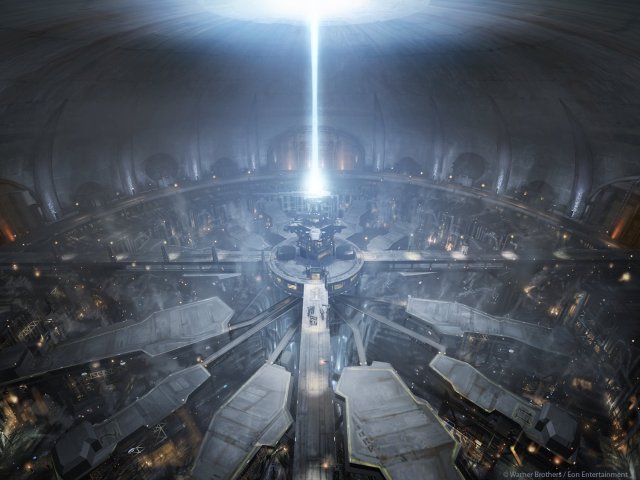
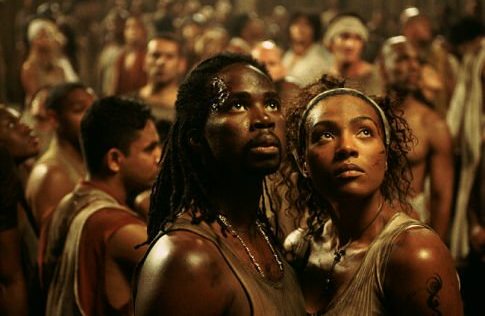
We are all characters within the matrix until we bypass ego. That virtual self image has to be stripped naked to ascend back into heaven.